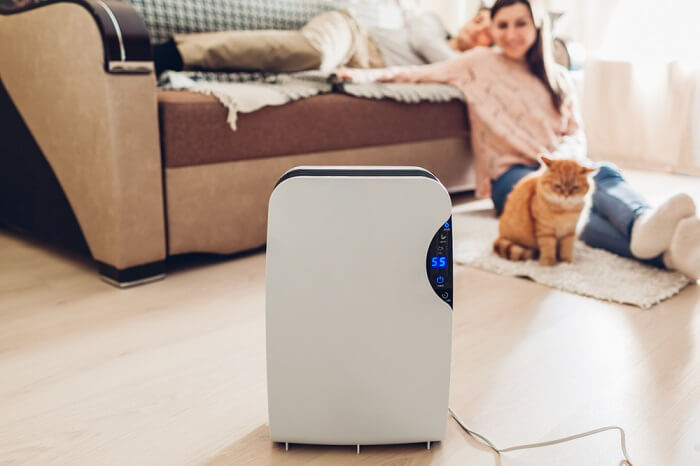
The best air purifiers for pet hair capture dander, pick up airborne cat and dog hair, don’t produce harmful emissions, and work efficiently to keep the air fresh day and night.
That’s why we chose the Winix 5500-2 Air Purifier with True HEPA as the best air purifier on the market.
For just over $200, this pet-specific purifier efficiently cleans medium-sized rooms, captures allergens, and has smart features for an effortless purification experience.
If you’re new to the world of air purification, scroll down below the reviews to read our buyer’s guide. You’ll learn how to decode air purifier lingo, which features matter, and how to identify the purifier that’s right for you.
Why Should You Trust Us?
This guide is the result of hours researching air purification technology, identifying key quality indicators, and evaluating over a dozen different air purifiers on performance, usability, customer satisfaction, and price.
Top Picks Explained:
At a Glance: Our Top Picks for Best Air Purifiers for Pet Hair, Dander, Allergies and Odor




Want a quick look at the products reviewed in this article? In the comparison table below, we’ve highlighted some of the most important features of each product. You’ll find more detailed information about each product later in the article.

Winix 5500-2 Air Purifier
- True HEPA air purifier captures allergens and airborne particles
- Destroys airborne bacteria
- Activated carbon filter neutralizes odor
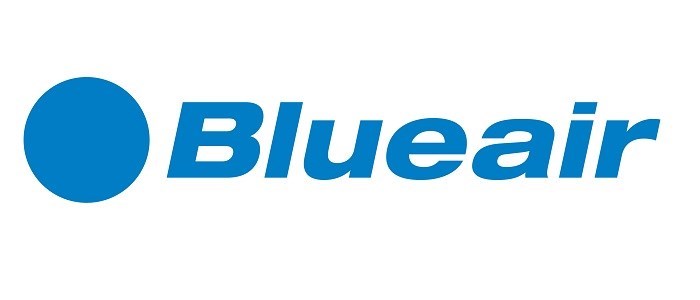
Blueair Blue Pure 211+ Air Purifier
- Chic, modern design with multiple color options
- Simple one-button operation with three fan settings
- Energy Star-certified for energy efficiency

EnviroKlenz Air Purifier
- Proprietary earth mineral technology neutralizes odors
- Extra-thick true HEPA filter
- Simple operation with four fan settings

Purrified Air Pet Odor Filter
- Specifically designed for litter box odor
- Combination of odor-eliminating material lasts 4 to 7 months
- Save up to 20% when purchasing multiple units

IQAir Health Pro Plus Air Purifier
- HyperHEPA filter captures even the tiniest particles
- 3D UltraSeal locks in particles
- Informative digital interface with flexible customization
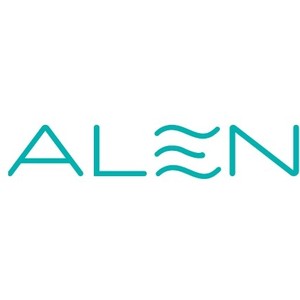
Alen BreatheSmart Classic Customizable Air Purifier
- Energy Star-certified for energy efficiency
- Generates pink noise, won’t disturb sleep
- Available in a wide range of shades
Top 6 Best Air Purifiers for Pet Hair
Who Needs an Air Purifier?
There are two types of people who need an air purifier. Some people simply hate having to deal with cat hair floating around and sticking to every surface in the house. For others, however, it’s an issue of sensitivity. Cat hair and dander are an issue for allergy sufferers.
The good news is an air purifier could be the ideal solution for both categories.
While air purifiers are really designed to remove airborne pathogens and other particles from the air, even a basic air purifier does a pretty good job of capturing cat hair. That being said, you may want to spring for a premium model if you suffer from serious allergies.
Speaking of allergies, remember that an air purifier isn’t a cure – you may still need to take medications for pet allergies and block off a cat-free zone in your home but an air purifier can make a difference.
When shopping for an air purifier, consider the ultimate problem you want to solve. Are you specifically trying to reduce allergies or simply want to improve the air quality in your home? Think about the size of your home as well and what kind of filtration system will deliver the results you want.
If you have no idea what we’re talking about, don’t worry – we’ll get into the details below.
What Kinds of Air Purifiers Are on the Market?
There are two fundamental types of air purifiers: active purifiers and passive purifiers. Let’s learn more about each type and how they handle cat hair.
Type One: Passive Purifiers
Passive purifiers have a system of filters that catch particles and prevent them from spreading through the air. Depending on the type of filters built into a passive purifier, it may be able to capture extremely small particles like pet dander and smoke.
Less efficient purifiers will capture cat hair but allow some finer particles to pass through. We’ll talk more about different types of filters later.
Type Two: Active Purifiers
Active purifiers don’t just filter the air, they sanitize it. They destroy airborne bacteria, viruses, germs, and spores. If you’re worried about airborne particles making you sick, this is the type of air purifier you want, but remember that it won’t do much for cat hair.
There are several types of active purifiers. Let’s learn more about each.
Ionizers
Ionizers release positive ions, negative ions, and sometimes both. There are two main types of ionizers. One type is called an electrostatic precipitator. This type of air purifier disperses ions, which attach to airborne particles before returning to an oppositely charged collecting plate in the purifier.
The second type is an ion generator, which releases ions into the air but doesn’t have a collecting plate. Instead of returning to a collecting plate, the molecularly altered particles linger on surfaces in your home.
When considering an ionizer, be aware that both types release ozone. Exposure to too much ozone can cause chest pain, coughing, shortness of breath, and throat irritation. Avoid ionizers that produce more than 50 ppb (parts per billion) ozone. For context, if a city was that ozone-polluted, sensitive residents would be advised to consider limiting their time outside.
Ozone Generators
Now you know that ozone can be a byproduct of ionizing air purifiers, but that’s not always the case—some purifiers intentionally produce ozone.
Despite being a pollutant, ozone is an excellent air cleaner. In fact, it’s partially responsible for that fresh smell in the air during and after a thunderstorm. Lightning strikes produce ozone and that distinctive clean smell.
Ozone generators eliminate odors and destroy airborne particles, including viruses, bacteria, and mold. Because they shock the air and eliminate hard-to-remove odors, ozone generators are popular among professional cleaners.
The problem with ozone generators is that the amount necessary to sanitize the air can also cause breathing problems. If an ozone generator is safe to run all day and night in your home, it’s not producing enough ozone to have a significant deodorizing or air cleaning effect.
UV Sanitizers
UV lamps can destroy microbial particles including mold spores, bacteria, and viruses. However, most purifiers let particles zip past the UV light, not giving them sufficient exposure time to sufficiently destroy them. It takes time for a UV light to eliminate particles. Only choose UV sanitizers that expose particles to UV rays for a long enough time to destroy them.
So, which is better for cat hair? Do you need a passive purifier or an active air purifier?
All the snazzy features found in active purifiers do nothing for large particles like cat hair and dander. Whether you’re allergic or not, you need a passive purifier to get that benefit.
If you require any additional purification, you can find a passive purifier with some active purification features, but they shouldn’t be machine’s central feature.
We’ve gone over the two main types on the market, but there’s one more type of air purifier to consider
Most air purifiers cost between $50 and $1,000, with price usually commensurate with quality. If you want a simple passive purifier without dropping a fat stack of cash, consider making your own.
A homemade air purifier is easy to construct using a box fan and the kind of HEPA filters typically sold for air conditioners. This is a good option for pet owners who want to experiment with air filtration before investing in a sophisticated purification system.
Watch This Video To Learn How To Make a Simple Air Purifier at Home
What To Look For in the Best Air Purifier for Cat Hair?
Now that you understand the basics about air purifiers, let’s get into the nitty gritty – here’s what you should think about when shopping for an air purifier for cat hair:
Choose an Air Purifier With an Effective Filtration System
The filtration system is the heart of the machine. Speed control, UV purification, stylish design, and other bells and whistles are insignificant compared to the purifier’s filters.
Allergy Sufferers Need HEPA Filters
Approximately 25% of cat dander particles are 2.5 microns or smaller, so allergy sufferers need a filter that can capture the tiniest particles.
According to U.S. standards, true HEPA filters capture 99.97% of particles at a size of .3 microns and above. They’re the gold standard in medical facilities, cleanrooms, and have even been used to arrest radioactive contaminants.
Don’t be fooled by sellers who describe their filters as “HEPA style filters, “HEPA-like filters”, or “HEPA-type” filters. HEPA is not a brand or style. It’s an effectiveness grade. A filter either meets that grade or it doesn’t.
Make Sure the Air Purifier Has a Pre-Filter
Before air particles reach the main filter, they must pass through the pre-filter. A pre-filter helps the main filter last longer. It captures big particles like cat hair before they can reach the less porous, more expensive primary filter.
Look for a Carbon Filter for Extra Odor Elimination
Most air purifiers incorporate carbon filters to help eliminate odor. These filters use activated carbon, which naturally absorbs odor vapors. This type of filter is useful for people who are sensitive to the smells around the litter box.
Consider How It Fits Your Budget (Both Upfront and Month to Month)
Your air purifier is a long-term investment with recurring costs including energy usage and replacement filters. To ensure that you’re getting an energy-efficient appliance, look for purifiers that have been Energy Star-certified.
Consider that different purifiers will require different types of filters, some of which may cost over $100. Minimize your replacement costs by choosing one with reusable and washable filters.
Think About the Noise Factor
If your air purifier is too loud, it might keep you awake at night or even make it difficult to have a conversation in the same room. Scan customer reviews for mentions of the purifier’s noise level and seek units with multiple speed settings. Faster settings circulate more air in a shorter amount of time, and the noise increases along with efficiency. Multiple speed settings allow you to take control of the noise level.
Choose a Fast, Efficient Air Purifier
Speed and efficiency are important, particularly if you suffer from cat allergies. An efficient air purifier can clean an entire room at least six times every hour.
Most air purifiers are rated for specific room sizes and some sellers state the product’s CADR (clean air delivery rate). This value gives you an idea of how well the purifier will clean the rooms in your house. The CADR is the number of cubic feet the air purifier cleans every minute. This number varies based on which speed setting you use and which pollutants are present.
Units certified by the Association of Home Appliance Manufacturers (AHAM) will release specific CADR numbers for dust, tobacco smoke, and pollen. Unfortunately for us, the testing process doesn’t involve cat hair or dander, but the standard AHAM testing is enough to help us evaluate the purifier’s efficiency and how it compares to others.
Additional Tips for Keeping Cat Hair and Dander Under Control
Choosing a great air purifier can cut back on time spent cleaning up cat hair and is a valuable part of an allergy sufferer’s toolkit, but it isn’t a complete solution. Whether you have an air purifier or not, it’s a good idea to implement the following cat hair control strategies.
Choose the Right Vacuum and Clean the Floors Regularly
The best vacuums for cat hair have HEPA filtration systems, tangle-free rollers, and powerful suction to keep your floors clean. If you haven’t already, choose a vacuum and start a regular cleaning routine. Remember—even the best air purifier can’t capture hair that’s already stuck in your carpet. It takes a great vacuum cleaner to do that.
Brush Your Cat Regularly
Before your cat’s hair has a chance to go flying off into the air, collect it with a brush. Brushing your cat has multiple benefits, including improved circulation, a shinier coat, fewer hairballs, and a cleaner home.
Click here for our guide to the top 10 best cat brushes.
If You Have Allergies, Recruit Someone To Bathe Your Cat
Regular bathing is one of the best ways to remove dander from your cat’s skin and coat. To avoid drying out your cat’s skin, limit baths to once every four to six weeks.
Conclusion
If you have allergies or cringe at the sight of cat hair floating in a sunbeam, the best air purifier can help you breathe easy. There’s a purifier for almost every budget, sense of style, and combination of health requirements.
Regardless of which air purifier you choose, remember to look for one with an effective, fast filtration system, enough purification power to clean the rooms in your house, quiet operation, and no harmful emissions.
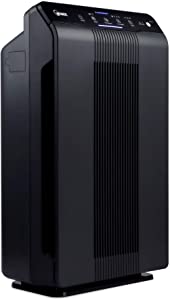
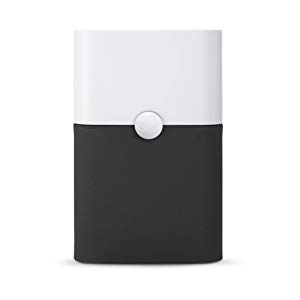

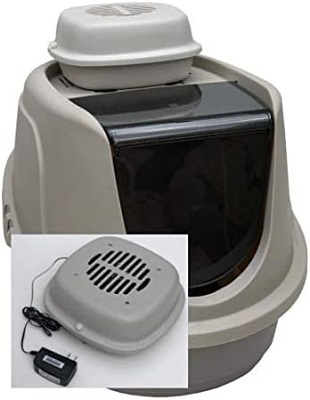

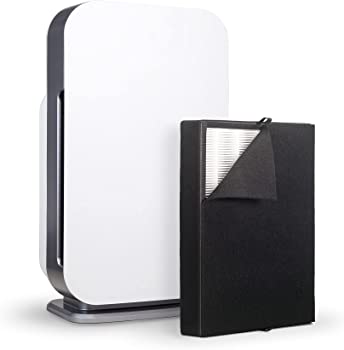
Hi Mallory,
My wife and I had become a cat parents recently and we absolutely love your website/blog. Everything is so detailed and right in place. Your videos are so good because we can see how genuine your feelings are about the products you review. We wanted to thank you for your effort.
We also have a feedback for you that might be helpful (I’m not sure if it’s already there and we missed it or not so apologies in advance). We thought it would be helpful if you could for example list all the brands you tested in your posts so people can see if there is a specific brand that was reviewed but not listed. For example one might have a brand in head that is good for a air purifier which is not listed in your top ones but one might also wonder if Mallory actually reviewed that branch or not. We think including the list of the brands would help cat parents to know if a brand of their choice was tested and didn’t find its place in the top picks.
Thanks again for being awesome and keep the good work.
Regards
Arash & Mona
Hello there! Thank you for being here—I really appreciate it. That’s an excellent request, and I will be sure to propose it for future content and updates. All the best to you, your wife, and your cat(s). – Mallory